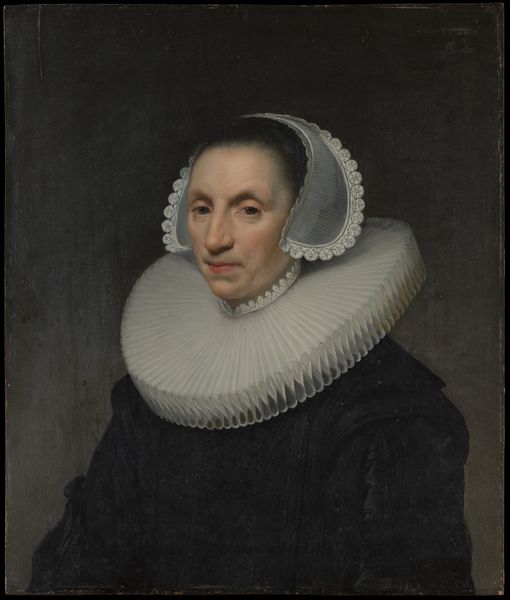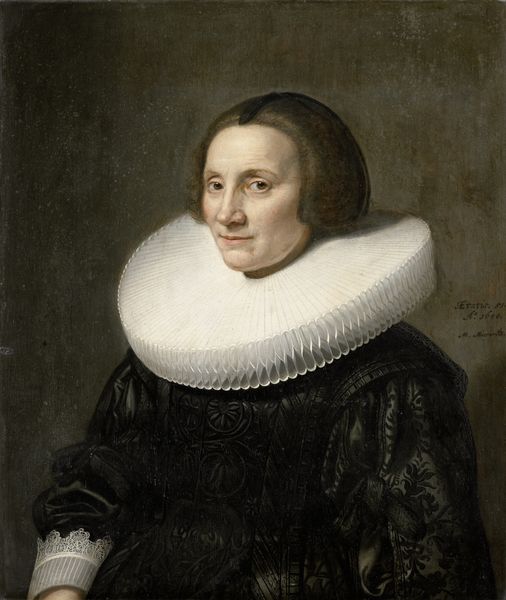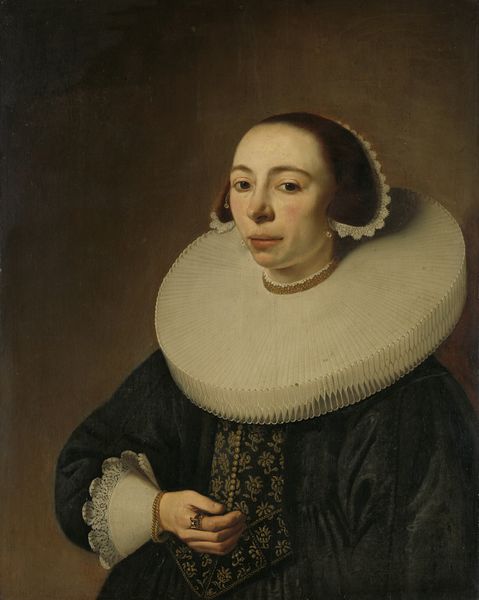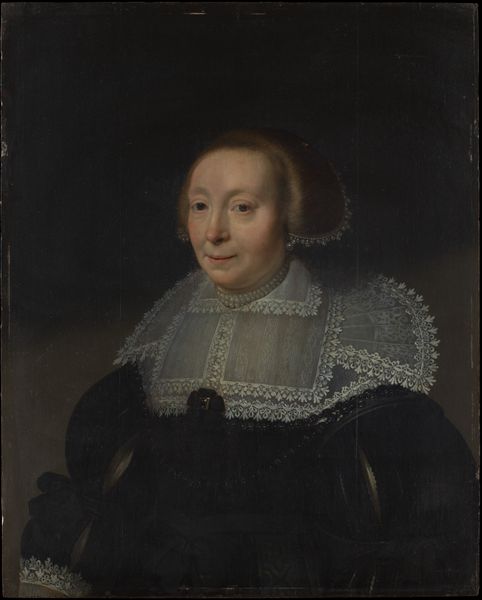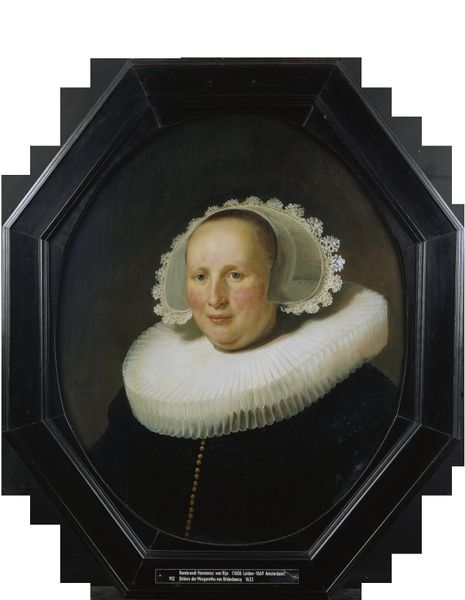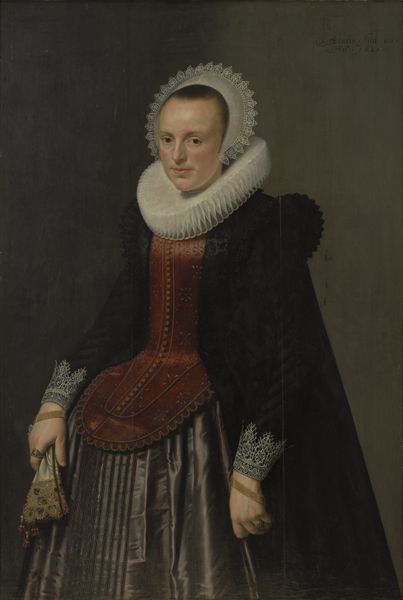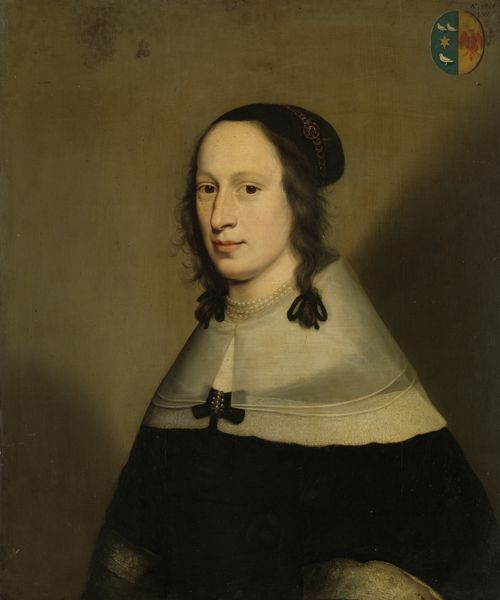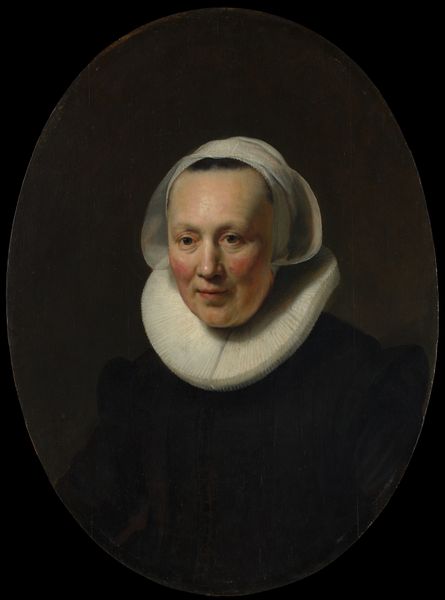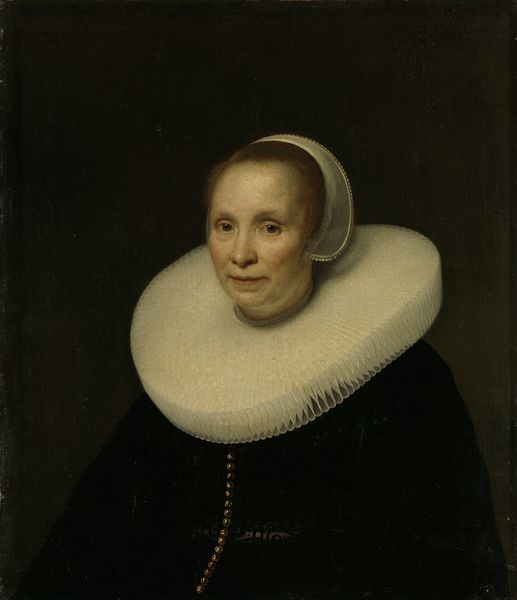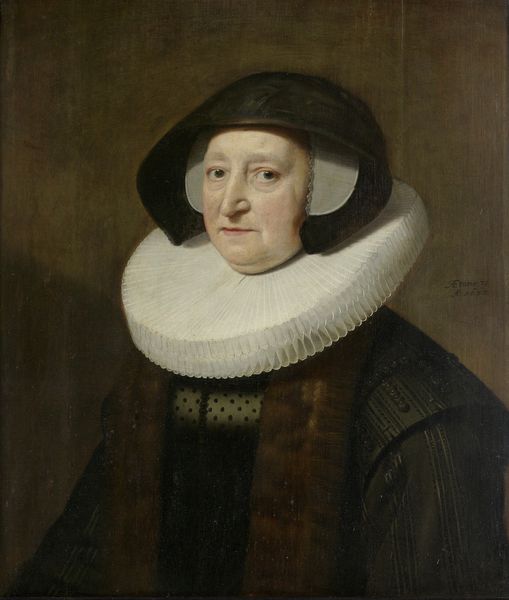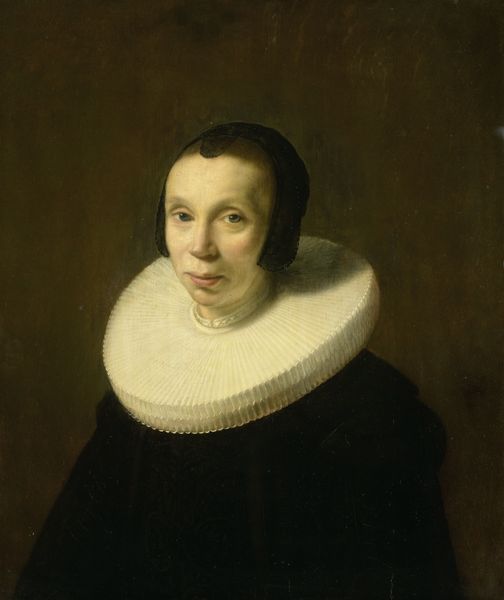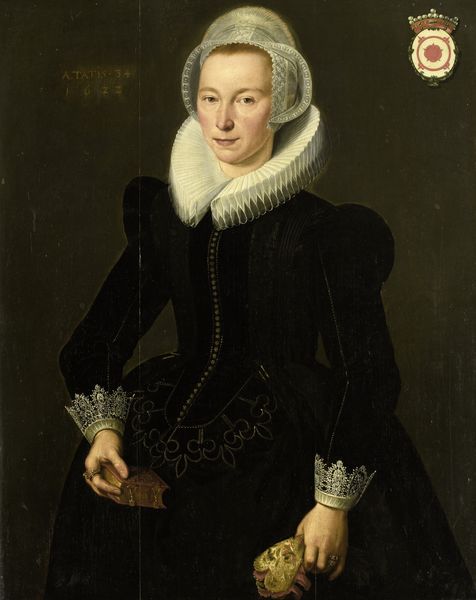
Margaretha van Clootwijk (born about 1580/81, died 1662) 1639
0:00
0:00
painting, oil-paint
#
portrait
#
baroque
#
dutch-golden-age
#
painting
#
oil-paint
#
figuration
#
portrait art
Dimensions: 27 3/4 x 22 7/8 in. (70.5 x 58.1 cm)
Copyright: Public Domain
Editor: This is a portrait of Margaretha van Clootwijk, painted in 1639 by Michiel Jansz. van Mierevelt. It’s oil on panel. There’s such stillness and formality to it; the ruff dominates the composition. What strikes you about it? Curator: Beyond the aesthetic qualities, consider how portraits function within a culture. This image isn't simply about likeness. The subject's garments, the familial crest floating above her shoulder -- these elements coalesce to convey status and lineage. It is meant to establish a sense of identity. Editor: Identity? You mean like she's putting it out there in the world? Curator: Precisely. Think of the ruff: an item that both protects and constrains. A high ruff presented the head like a platter of honor. In what way is the cultural display encoded in her being and surroundings a kind of armor? It shows she exists in society in a very intentional manner, even while it’s physically uncomfortable. Editor: I never thought of clothing as symbolic armor, or how the subject presents themselves to the world in that manner. Does the family crest communicate power and history? Curator: The family crest served as a form of visual shorthand. Lineage and legacy are as important as her garments. Together, these painted representations shape collective memory. So it suggests established identity, enduring values. A visual language for those who know how to read it. It also suggests that there might have been something for them to protect, which makes me want to know more. Editor: So, it’s not just a portrait, but a cultural statement and perhaps also a challenge for future scholars to understand their history. I’ve definitely learned to look closer, to question more. Curator: Absolutely. And to appreciate the ways images continue to shape our understanding of the past, and of ourselves.
Comments
No comments
Be the first to comment and join the conversation on the ultimate creative platform.
